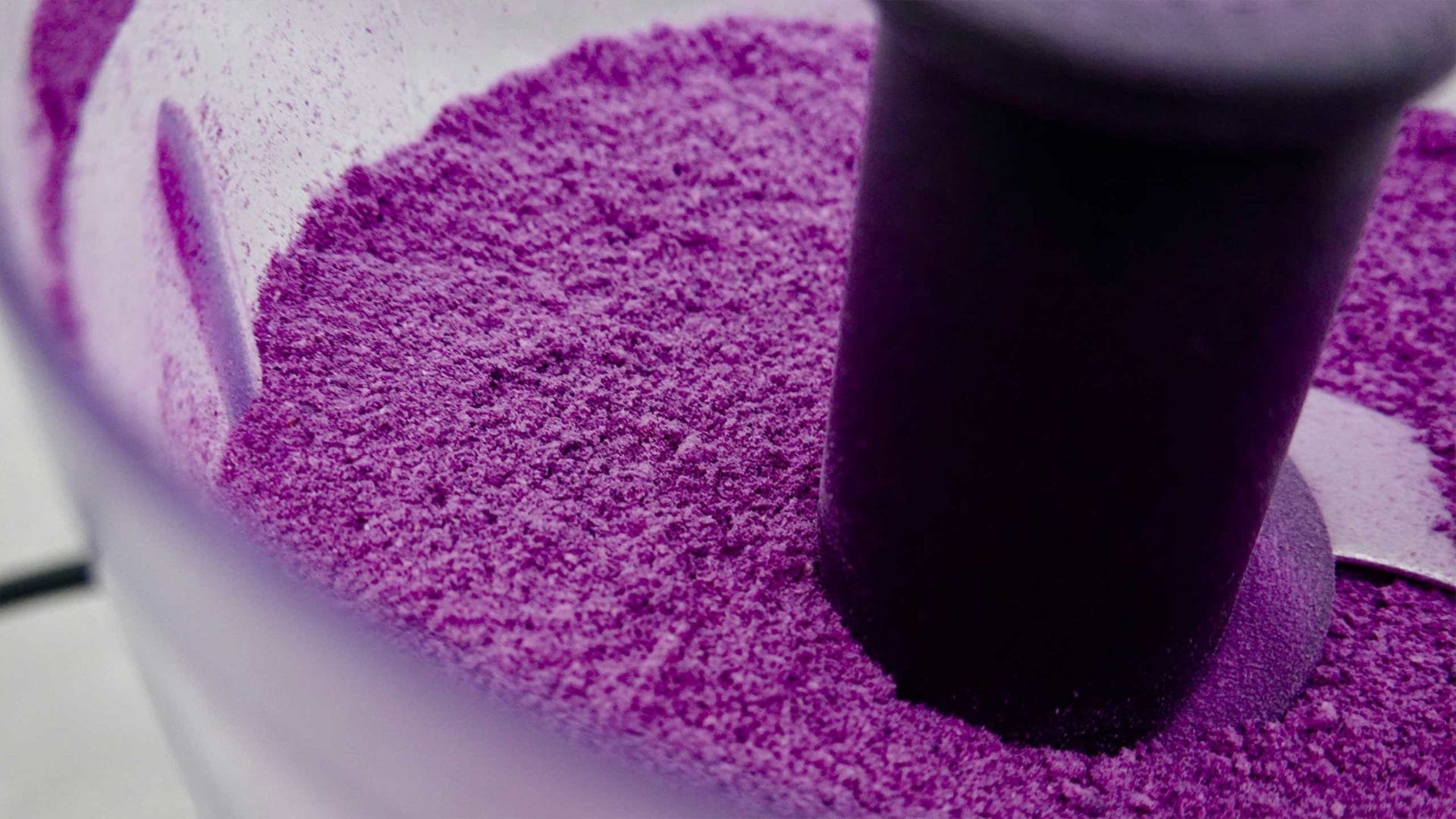Cabbage, part 3:
Bread cabbage
We love cabbage! And that’s why nothing is wasted in our red cabbage experiments, of course. From red cabbage pomace with flour, water and a little Gelduld first red cabbage sourdough – and then juicy cabbage bread aka “bread cabbage”!

Red cabbage sourdough
From the juice production for our Kohla and our red cabbage kombucha we have a pomace left over, which we do not want to throw away: It has an intense color and a full aroma, so it is anything but a “waste product”. We dry the marc in a so-called dehydrator. In this process, the remaining liquid is extracted from the pomace. This process takes ten hours at 60 °C. The entire kitchen smells of cabbage, slightly musty and stuffy.

The next morning, this smell was already almost gone. The cabbage pomace is completely dried, a kind of cabbage grain flakes. Vegetable mueslis are a topic in star cuisine, and further experimentation could be done with them as well. With a flavored butter or oat milk, this could be quite interesting. But we stick to bread. We mix the dry pomace into fine cabbage meal, which we sift once to avoid larger impurities.

In our sourdough, rye flour and water are the basis. We don’t yet know for sure if this experiment will succeed or if our cabbage flour will negatively affect dough development. The sourdough is now fed with the same amount of cabbage flour, flour and water for five days each and must ferment at a temperature of 20 degrees. This process is done under lock and key, which means that the jar is always closed, except when feeding.

The sourdough has developed well and we bake our first cabbage bread or better bRed cabbage! This has a charcoal note but is not too intense. Basically, nothing stands in the way of further vegetable or fruit breads.



